The Frugone brothers' collection offers visitors a captivating journey through the new sensitivity of the artists for the true and, in particular, for the representation of the landscape bathed in natural light. In this regard, there are some important works by the Macchiaioli, artists from Tuscany, among them, Giovanni Fattori (Livorno 1825- Florence 1908), Silvestro Lega (Modigliana, Forlì 1826-Florence 1895) and Telemaco Signorini. The first, in particular, is present not only with the military subject of Pattuglia di cavalleggeri, dating from 1885-1890, but above all with Buoi e bifolco in riva all'Arno, dating from 1870-75; Lega is represented by Donna con edera, an intense portrait playing on the complementary red and green colours of a mischievous female subject, inspired by the women of Gabbro, a village close to Rosignano Marittimo in the Livorno countryside, frequented between 1885 and 1886 thanks to the friendship with the family Bandini.
The sunny Vegetazione ligure a Riomaggiore is also the work by Signorini, exhibited at the Venice Biennale in 1897, a splendid artistic testimony of the painter's recurring presence in the Cinque Terre between 1892 and 1899, where he was able to measure his palette with the brightness of the suggestive environment.
Il Mattino by Antonio Fontanesi (Reggio Emilia 1818-Turin 1882) is a splendid canvas with romantic intonation, in which nature becomes the theatre of inner solitude; and continuing the choice to depict the landscape from life are the small images by the Piedmontese Lorenzo Delleani (Pollone 1840 –Turin 1908), La raccolta delle patate, sketch of 1887 for “Alma parens” of the Marzotto collection of Valdagno, Lago del Mucrone in the region around Biella of 1898 and Colonnato di Oropa of 1900, fresh impressions quickly made which, together with 32 other works by Delleani, were purchased by Stefani at the 1907 Venetian Biennale for the exhibitions organized in South America. Also noteworthy are the landscapes, oscillating between naturalism, memories of the “Scapigliatura” movement and research on the truth, by the Lombards Emilio Gola (Milan 1851-1923), Eugenio Gignous (Milan 1850-Stresa 1906), Leonardo Bazzaro (Milan 1853-Miazzina 1937), Mosè Bianchi and the Trentino Bartolomeo Bezzi (Fucine d'Ossana 1851-Cles 1923), which complete the collecting taste of the Frugone brothers and the overview of the renewal of Italian landscape painting in the second half of the 19th century.
Autumn (1904)
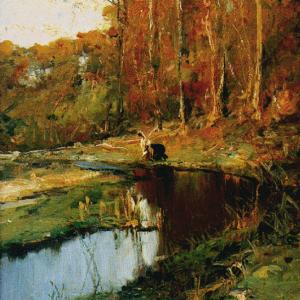
Autumn (1904)

Autumn (1904)

Autumn (1904)

The morning
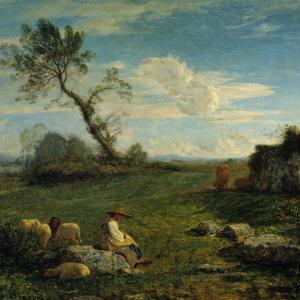
The morning

The morning

The morning

Woman with ivy
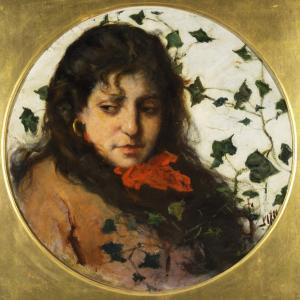
Woman with ivy

Woman with ivy

Woman with ivy

Ligurian vegetation in Riomaggiore
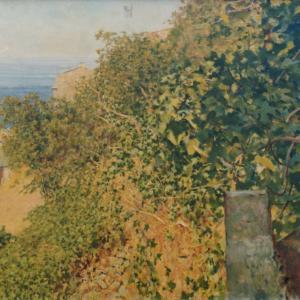
Ligurian vegetation in Riomaggiore

Ligurian vegetation in Riomaggiore

Ligurian vegetation in Riomaggiore

Cavalry patrol
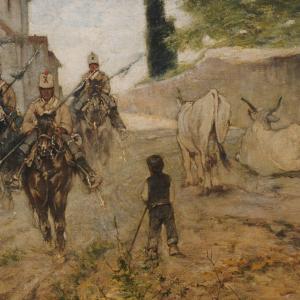
Cavalry patrol

Cavalry patrol

Cavalry patrol

Mucrone Lake
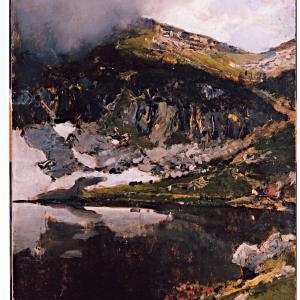
Mucrone Lake

Mucrone Lake

Mucrone Lake

Oxen along the banks of the Arno
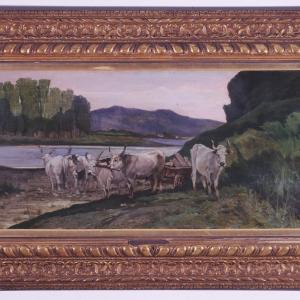
Oxen along the banks of the Arno

Oxen along the banks of the Arno

Oxen along the banks of the Arno





